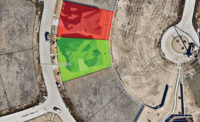Hurricane Sandy’s impact on the United States was tremendous. The nation’s most heavily
populated metropolis experienced electrical power outages, critical supply chain disruptions,
and intermittent transportation in the days and weeks after the storm’s landfall. Many critical
operations struggled to get diesel fuel to supply their back-up generators. Some experts
thought the New York metro area would be immune to such catastrophic critical infrastructure
disruptions, so how could the area have mitigated Sandy’s impact? Energy microgrids could
have played a part.
A microgrid is a small, electric utility than can be disconnected from the larger electrical grid
for stand-alone, computer-controlled, independent operation. Microgrids are essentially an
automated mini-utility with on-site generation, automated local restoration, and computer
controlled operations.
Under normal conditions, a microgrid provides strong benefit to the utility and customers.
The microgrid blends distributed generation, utility operations, energy efficiency, demand
response, situational awareness, system optimization, conservation voltage reduction (CVR),
Volt/VAR optimization along with other technologies to drive down generation cost, use less
energy, enhance reliability, and balance local energy supply and demand. Microgrids work
transparently and in parallel with normal utility operations. However, it is during abnormal and
severe impact situations such as Sandy when the true value of a microgrid can become evident.
Microgrids have the capability of becoming grid independent, or islanded. During normal
conditions, the microgrid is connected to the utility. Local generation feeds the utility grid, and
microgrid operations fall under normal utility system control and procedures. When a severe
impact storm such as Sandy causes power outages, the local microgrid controller assumes
control of the local area and disconnects from the grid. This results in continued service for the
microgrid tenant.
Microgrids use a small fleet of local, on-site generation in addition to the existing utility grid to
supply electricity. This generation fleet can include natural gas supply generators, small solar
arrays, fuel cells, diesel generators, and other generation options. In additional to the benefit
of low price, natural gas inherently provides an enhanced energy assurance. It is exceptionally
rare for the electrical grid and the natural gas distribution systems to be down at the same time.
The natural gas system is a completely independent, non-coupled manner to supply energy
to a location. For years, electric grid reliability was reinforced by using diesel generators and
uninterruptable power supply as back-ups.
However, as occurred in Manhattan, this electrical supply can fail or have significant limitations. In the wake of the superstorm, many critical facilities had significant risks associated with diesel fuel delivery reliant on an intermittent transportation system. Since microgrids can use natural gas to supply onsite generation, the combination of the existing electrical grid coupled with natural gas-fired generation can
substantially increase energy assurance in addition to providing cheaper energy costs. Natural
gas also minimizes the critical diesel fuel supply chain risk. Plus, additional solar, fuel cell, and diesel generators can diversify energy sources to minimize risk.
Microgrids provide a higher level of reliability and energy assurance than the pure electrical grid. The general public is much more attuned to utility performance than in previous times especially when keeping the lights on becomes critical in the wake of an extreme weather event. Microgrids offer a demonstrable, alternative method to traditional reliability improvement techniques like vegetation management, undergrounding, and distribution automation, and could help minimize the impact of the next superstorm.


Post a comment to this article
Report Abusive Comment